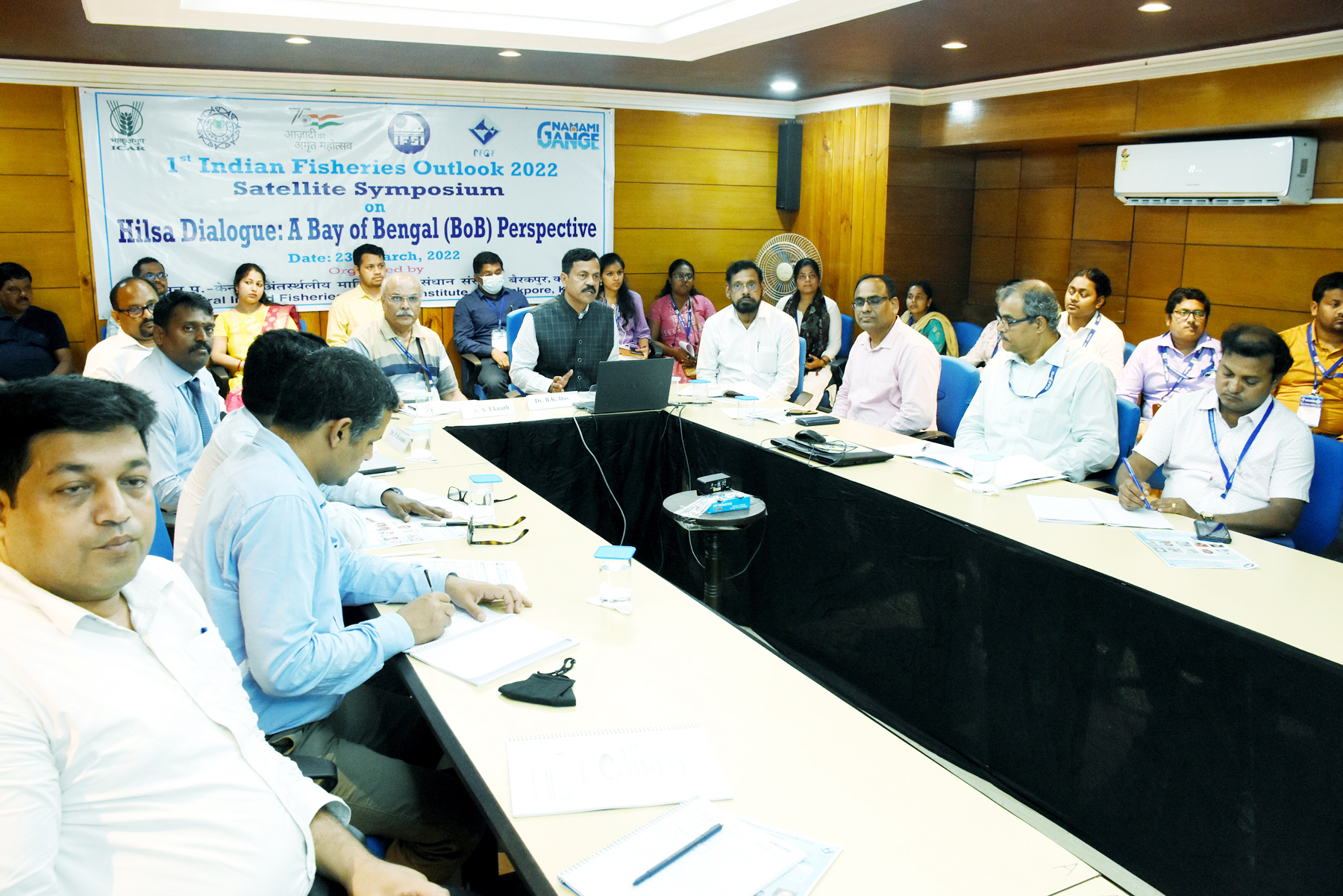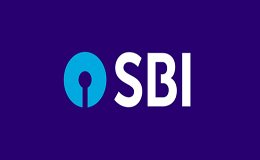Overview
Publications
Recruitment
Intranet
CIFRI Corners'
ICAR-CIFRI, Barrackpore organized a ‘Satellite symposium on Hilsa Dialogue: A Bay of Bengal (BoB) Perspective’ as a part of 1st Indian Fisheries outlook 2022 and Azadi ka Amrit Mahtav on 23rd March 2022. The symposium was conceptualized to develop a regional policy and management plan towards Hilsa conservation and propagation through exchange of scientific intellectuals among hilsa experts representing from India, Bangladesh, Myanmar and Norway. Dr, B. K. Das, Director, ICAR- CIFRI welcomed all the delegates, experts and scholars and provided opening remarks on the hilsa research activities carried out by the institute since last five years. Dr. Das majorly highlighted the Hilsa improvement programme in the river Ganga taken up by ICAR-CIFRI in association with National Mission for Clean Ganga (NMCG). Dr. Das mentioned that more than 55000 adult hilsa fish have been ranched in the upstream of Farakka Barrage towards restoration of hilsa in upstream of Ganga. In order to understand the migratory path, more than 2200 adult hilsa have been tagged and released. It was interesting to record that the study observed hilsa could migrate 225km in 5 days. Furthermore, Dr. Das informed that ICAR-CIFRI is working for cyro-preservation of hilsa spermatozoa towards successful breeding programme. Dr. Das suggested that a long term, possibly 10 years programme is required for effective monitoring and bringing out visible impacts. Prof. Abdul Wahab, Advisor, Worldfish (Bangladesh), presented on the current status of hilsa in Bangladesh and Policy towards conservation in Inland waters. Prof. Wahab, said the current hilsa production in B’desh is 690000 metric ton/year. Prof. Wahab highlighted that in B’desh the legal mesh size of net for hilsa catch is 6.5 cm and ban period of hilsa is 22 days during October –November in every year and minimum 500 gm of hilsa is allowed to catch. Prof. Wahab informed that awareness and hisla action plan have major role in hilsa production in Bangladesh.
Dr. Michael Akester, Country Director (Worldfish), Myanmar highlighted the management policy towards hilsa fishing in Myanmar. Dr. Akester explained that hilsa fishery has two main components a) artisanal and b) industrial. It has been documented that 1.6 million hilsa fishers involved in Myanmar mostly artisanal fisheries. Dr. Akester also highlighted on the hilsa spawning season in Myanmar i.e one main spawning peak in August- September (particularly September), with potential smaller peaks in January- February and April-May.
Dr. Atle Mortensen, KANAKVA, Norway, suggested that picking up useful scientific knowledge of Salmon culture for hilsa aquaculture. Dr. Atle shared the scientific knowledge and experiences on Salmon breeding and captive bloodstock development. Dr. Atle emphasized on land based salmon farming and successful selective breeding programme. Dr. Atle said that the laval stages o fhilsa is much similar to the Cod larvae, hence training and capacity building on the larveal feed and development is important towards hilsa aquaculture.
Dr. P. Krishnan, Director Bay of Bangal Project, India, briefed the role Bay of Bengal Project in hilsa fishery management. Dr. Krishnan focused on the global hilsa production scenario and research activities needed at a regional approach as these countries share a common water of Bay of Bengal. Furthermore, Dr. Krishnan suggested for conservation and management of hilsa fishery in the BoB as a single stock.
Dr. B.P. Mohanty, Assistant Director General (Fishery Science), ICAR, New Delhi, India, addressed that the nutrient contents of Hilsa possess not only rich in oil and PUFAs, but also rich in protein, fat soluble vitamins A, D, E K and macro and microelements. Dr. Mohanty expressed that many aspects of the biology of hilsa are still not understood and becomes bottleneck in its domestication and large-scale farming like salmon.
Dr. Md. Jalilur Rahman, Scientist (Ecofish II) Worldfish, Bangladesh, highlighted the importance of policy and successful implementation of brood hilsa ban period i.e 22 days every year to improve the spawing success in Bangladesh. Dr. Rahman expressed that average spawning success of hilsa were 48%, 56% and 33% in 2017, 2018 and 2019 respectively in Padma and Meghna rivers. Dr. Rahman showed that an annual incremental growth of the production increased from 5% to 9.2 % per annum due to the increased spawning success and Jatka conservation in Bangladesh.
Prof. Ashim Kumar Nath, Professor of Zoology, Sidho Kanho University, said major reasons for declining of hilsa production in Hooghly estuaries. Prof. Nath suggested for a complete ban on illegal jatka fishing, fishing ban period enforcement, and declaration of hilsa sanctuary could be possible ways towards hilsa conservation for Indian rivers. Dr. Arnab Biswas, MD, Director, Alo Eye Hospital, Kolkata, presented the social, cultural and mythological linkage with Hilsa. A total of seven e-posters were selected for the presentation. These posters were majorly covered on hilsa transportation, stock characterization, migration physiology, hilsa aquaculture and socio-economic on hilsa fisheries.
Dr. K.K. Vass, former Director of ICAR-CIFRI, and chairman of the symposium brought out important suggestive measures and recommendations from all the presentations and highlighted the importance of the symposium. Dr. Vass urged that regional approach could be the fundamental for the icebreaking in the hilsa fisheries conservation and propagation in the Ganga-Brahmaputra-Meghna (GBM) basin. The major recommendations were 1) Regional approach on Hilsa fisheries management through BOBP programme considering the state fisheries departments and central fisheries research institutions in a holistic approach 2) Regional research activities on the hilsa stock characterization, hilsa migration and artificial propagation should be initiated 3) For increasing hilsa fisheries in the Indian rivers proper investigation must be carried out and role of fish passes installed across the major rivers should brought to the public domain 4) Strict adherence of law and order towards fishing ban period as indicated in the Bangladesh should be followed. Dr. Vass proposed for developing conservational hilsa aquaculture in India. Dr. R. K.Manna, Pr. Scientist proposed the vote of thanks. More than 70, delegates including experts, scholars and students participated in symposium. The programme was coordinated by Drs. A.K.Sahoo and D.K.Meena.












